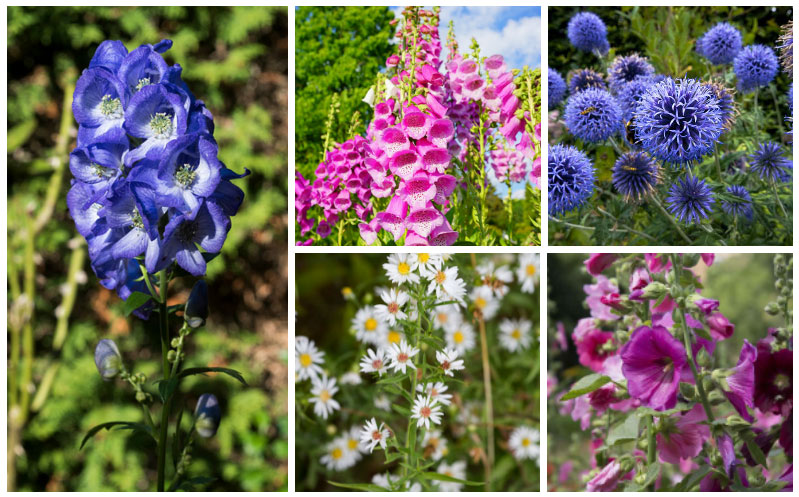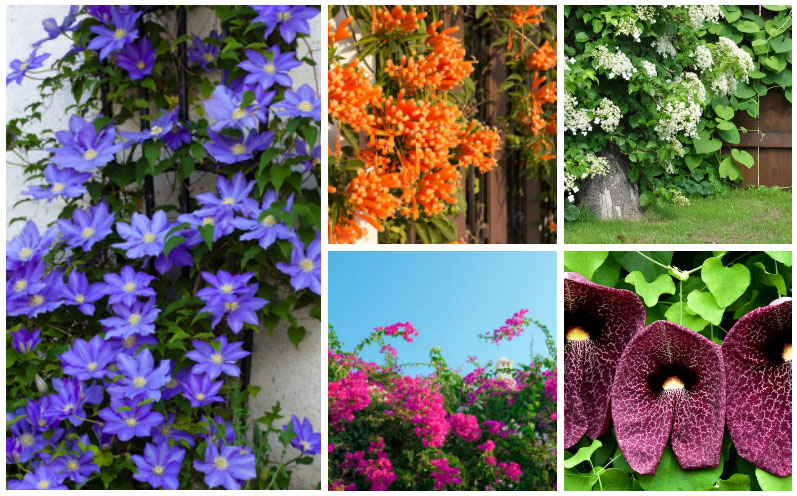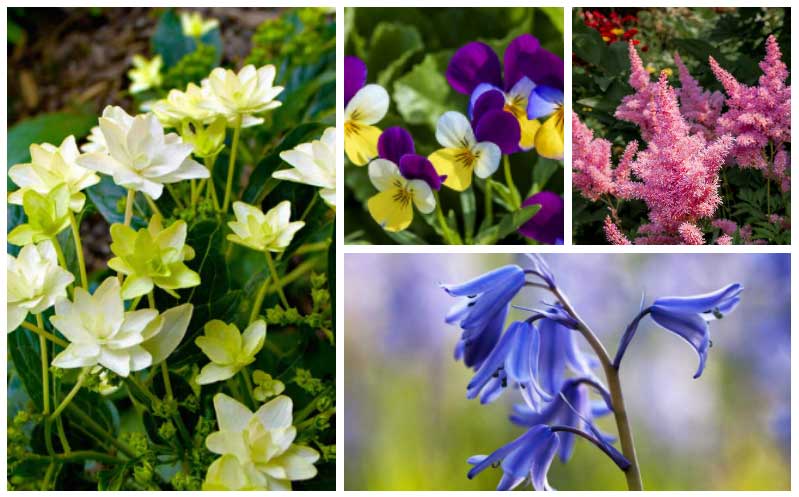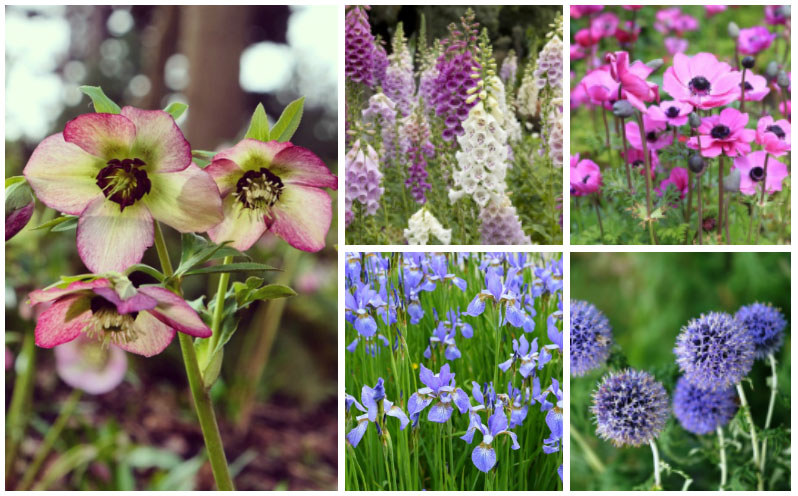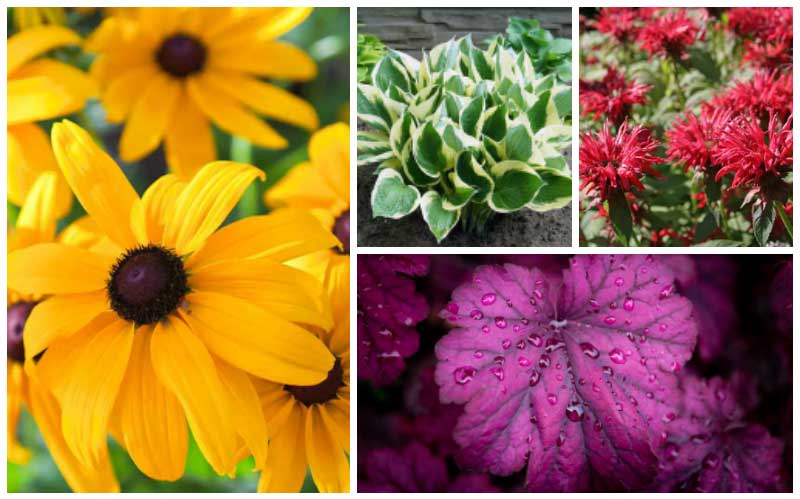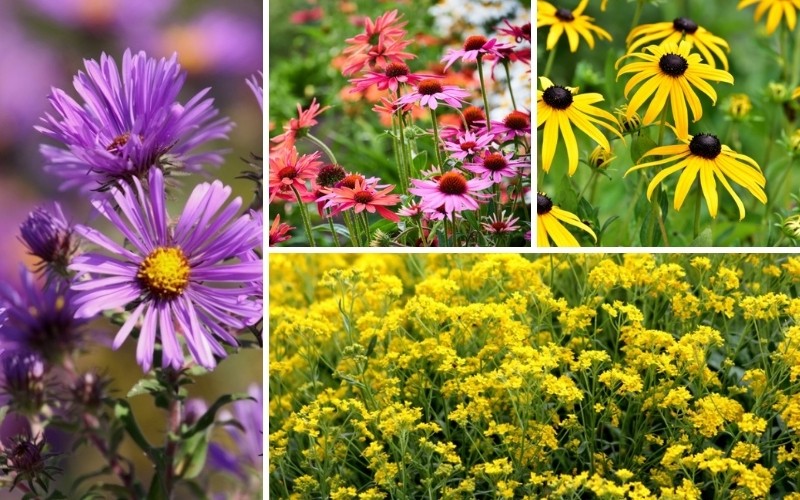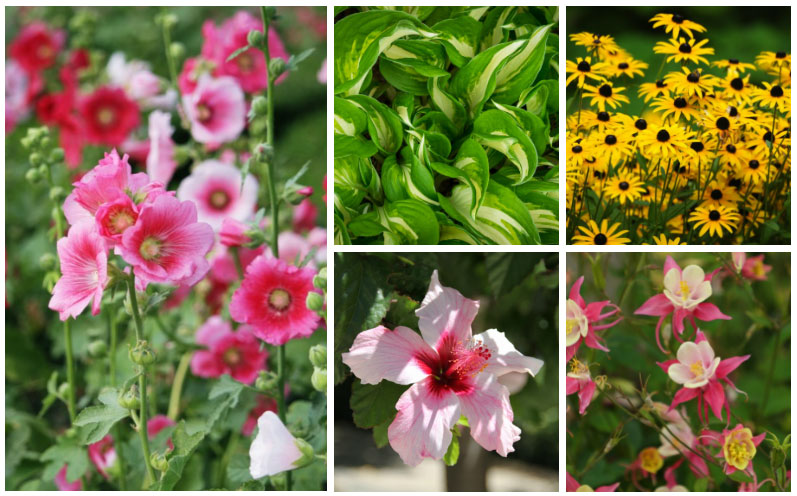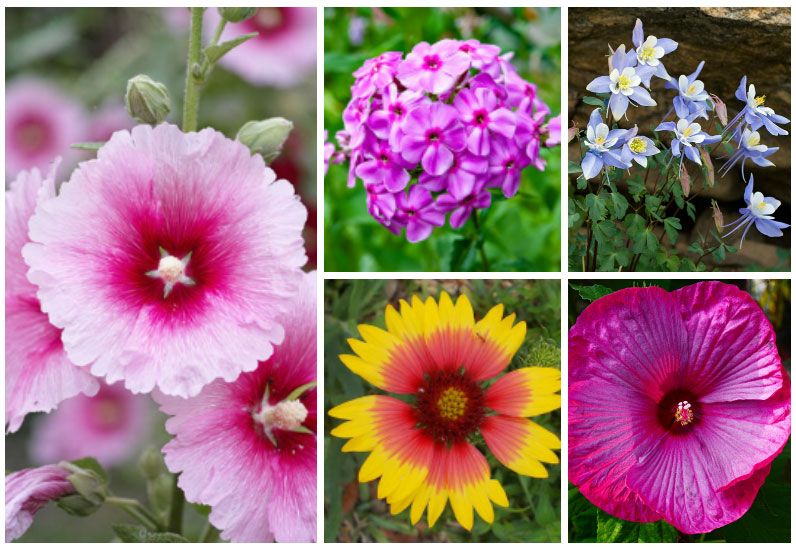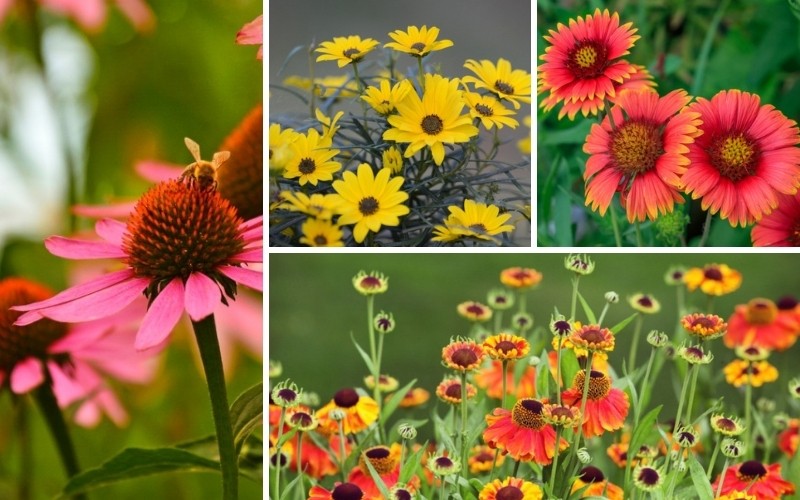
Delaware encompasses two USDA plant hardiness zones: 6 through 7B, which makes it ideal for a wide range of perennials. Not only will cool season perennials typically hardy in zones 3 through 8 thrive in Delaware, but warm season perennials that thrive in zones 7 through 10 can be grown successfully in Delaware, too. That means you have a wider selection of perennials to choose from than either your northern or southern neighbors.
Black-Eyed Susan (Rudbeckia spp.)
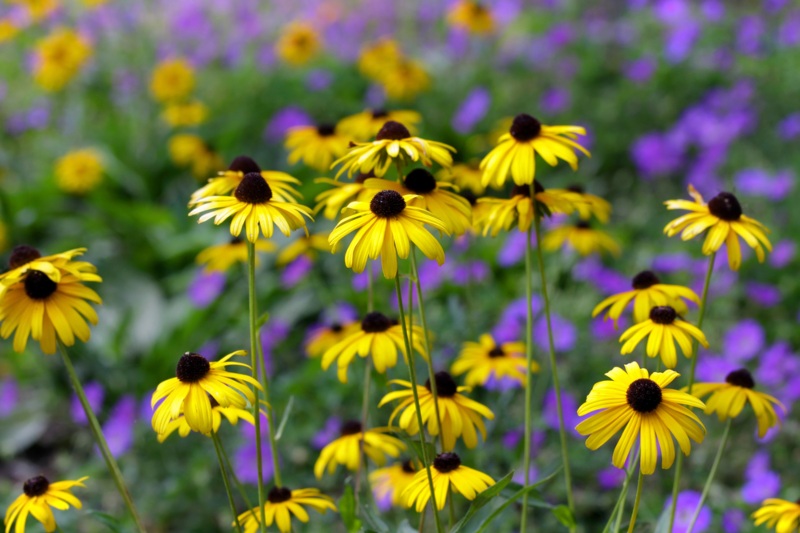
If the mere mention of rudbeckia conjures up images of golden petals with deep brown centers, often referred to as Black-Eyed Susans or Bull’s Eyes, you may be surprised to learn that rudbeckia includes a wide range of flowering perennials in lovely shades or yellow, orange and red. Bloom time begins in early summer and last through the fall. Black-Eyed Susan grows to heights of 2 to 3 feet with a similar spread. It thrives in full sun in average well-drained soil. It is hardy in USDA plant hardiness zones 3 through 7.
Coneflowers (Echinacea spp.)
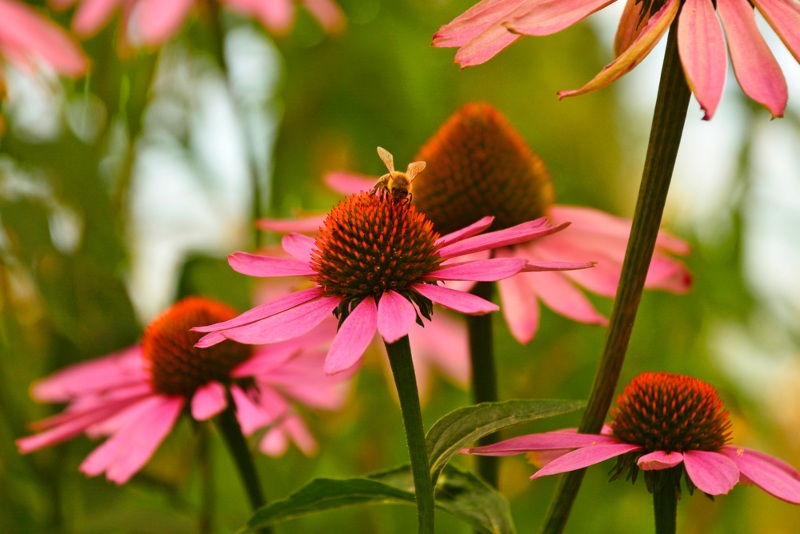
Coneflowers are the mainstay of perennial beds across much of America. These hardy flowers produce striking blooms that attract a host of butterflies and bees. Colors range from the traditional purple coneflower to many shades of pink, yellow and even white. They thrive in USDA plant hardiness zones 3 through 9, depending on the cultivar, and prefer full sun but will grow in partial shade. Coneflowers are drought tolerant once they are established and will grow in nearly any soil if it is well drained.
Blanket Flower (Gaillardia spp.)
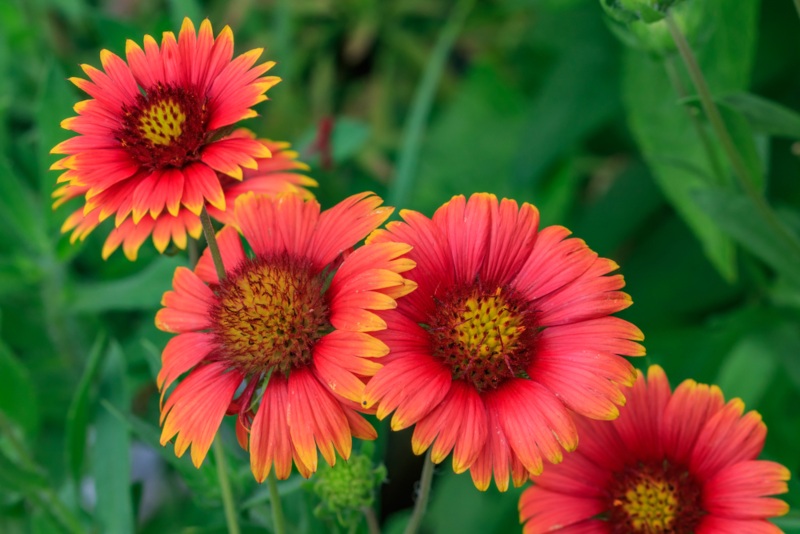
Blanket flowers are showy plants ideal for adding fiery color to the flowerbed. They produce large daisy-like blooms with petals in shades of yellow and orange banded with deep orange or red with a distinct eye. Gaillardia reaches heights of 1 to 2 feet with a 2-to-3-foot spread. It prefers full sun in average well-drained soil. Gaillardia is hardy in USDA plant Hardiness zones 3 through 10.
Butterfly Weed (Asclepias spp.)
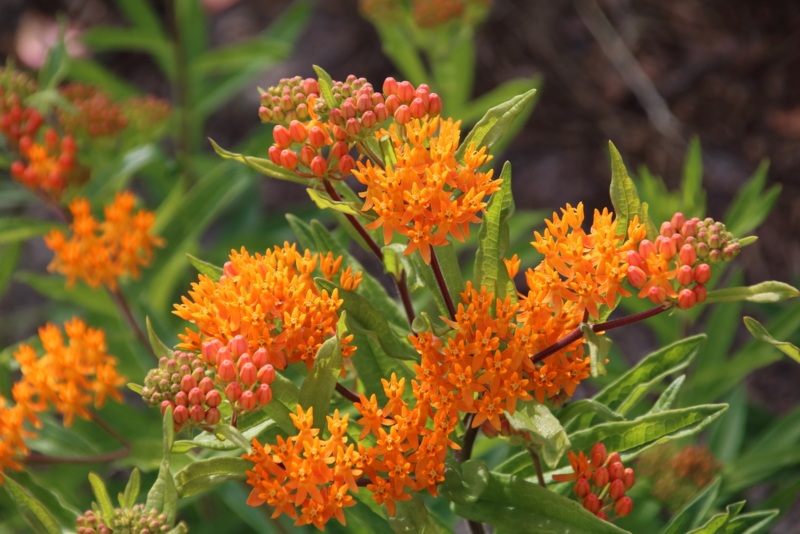
Butterfly weed produces huge clusters of tiny orange of yellow flowers from late spring through the summer. It attracts bees and butterflies setting the garden abuzz with color and movement. It grows to heights of 1 to 2 feet with a similar spread. Butterfly weed prefers average well-drained soil but does remarkably well in poor, dry soils. Butterfly weed needs full sun and is hardy in USDA plant hardiness zones 3 through 9.
Trumpet Vine (Campsis spp.)
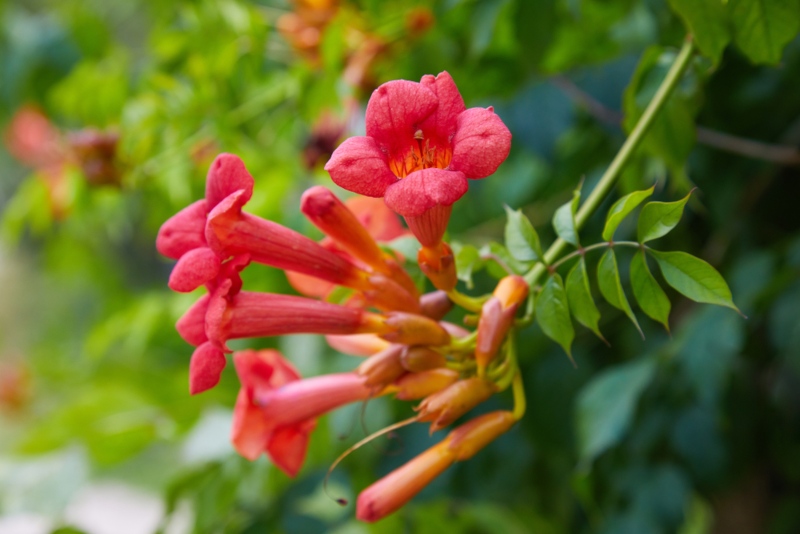
Also known as trumpet creeper, this flowering vine is showstopper when in full bloom. It produces masses of bright scarlet or orange trumpet-shaped blooms that attract hummingbirds. Vines can reach heights of 40 feet or more with a spread of 5 to 10 feet. Trumpet vines grow well in average to poor soil. They will grow in the shade but require full sun for the best blooming. Trumpet vines are hardy in USDA plant hardiness zones 4 through 9.
Russian Sage (Perovskia ‘atriplicifolia’)
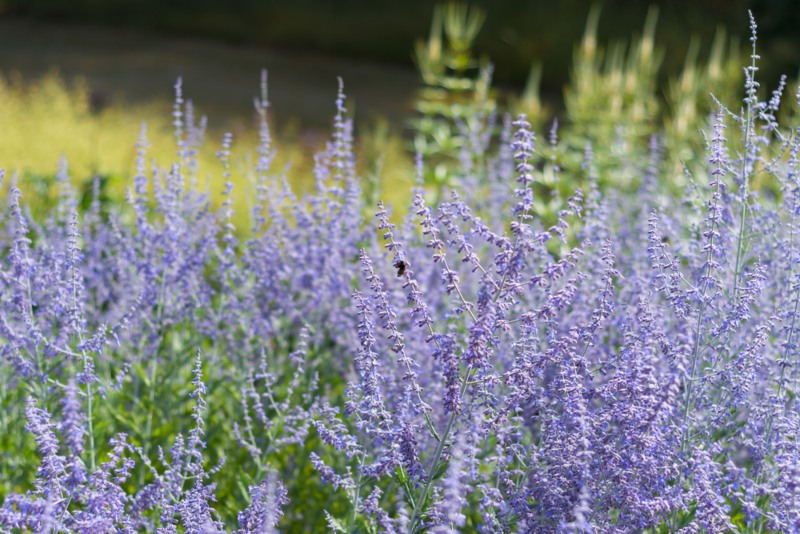
Russian Sage is a delightful perennial that looks a lot like lavender. It grows to in clumps of tall slender stems laden with clusters of lavender-blue flowers. Foliage is blue-green and slightly feathery to the touch. Its upright airy growth makes Russian Sage the ideal plant for adding a splash of color to contrast with other richer colored flowers like coneflowers. It prefers sandy or rocky soil in full sun and prefers average to alkaline soil. It does not do well in either wet or acidic soil. Russian Sage grows to heights of 2 to 4 feet and thrives in USDA plant hardiness zones 5 through 9.
Tickseed (Coreopsis spp.)
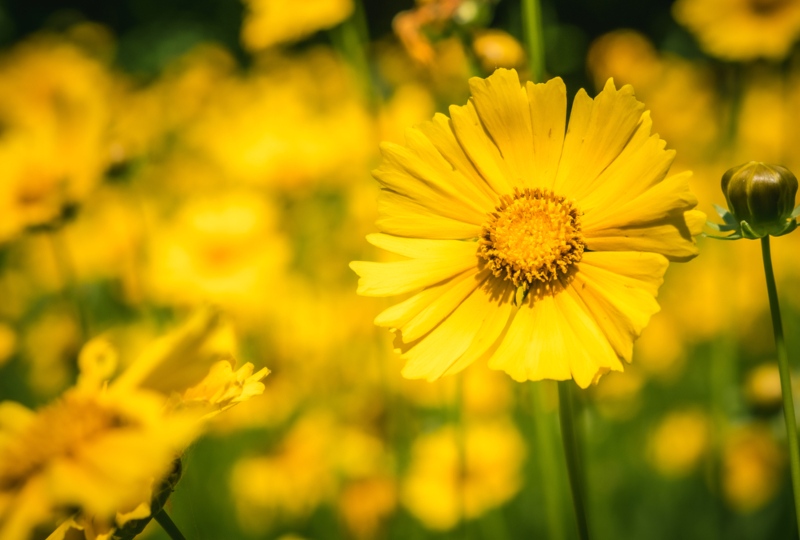
These bright yellow, daisy-like flowers bring the garden alive from late spring until well into the summer. It grows to heights of 1 to 2 feet with a spread of 18 inches. Tickseed grows readily in poor soils and is ideal for planting in rocky or sandy areas of the yard. It prefers full sun and is drought-tolerant. Tickseed is hardy in USDA plant hardiness zones 4 through 9.
Yarrow (Achillea)
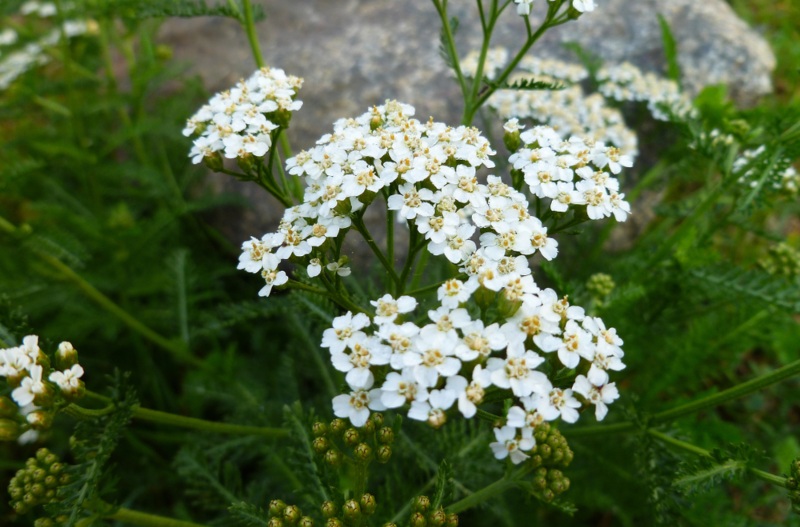
Yarrow is herbaceous perennial that is right at home in either the herb garden or perennial bed. The flattened head of this plant is made up of hundreds of tiny blooms that range in color from white and pastel pink to brilliant shades of purple, red and yellow, depending on the cultivar. It thrives in average to poor soil and may even suffer if the soil is too nutrient rich. Yarrow likes acidic soil to neutral soil with a pH between 4 and 8. It prefers full sun and well-drained soil. It is drought tolerant but will benefit from supplemental watering if you receive less than an inch of rain a week. Yarrow is hardy in USDA plant hardiness zones 3 through 9.
Sneezeweed (Helenium)
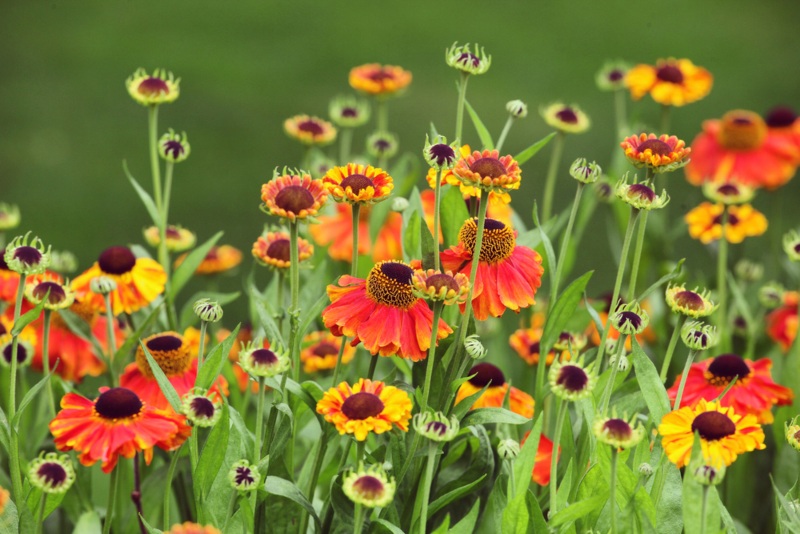
Sneezeweed includes a wide selection of daisy-like flowers in dazzling shades of yellow, gold, orange and red. Flowers are 2 to 3 inches in diameter with a distinct brown center that is covered with bright yellow pollen. Sneezeweed attracts butterflies and bees and blooms from early summer to fall. It thrives in full sun and prefers moist, well-drained soil. While sneezeweed will tolerate poor soil, it prefers soil rich in organic matter. Sneezeweed reaches heights of 3 to 5 feet, depending on the cultivar. It thrives in USDA plant hardiness zones 3 through 8 and will grow happily throughout Delaware.
Swamp Sunflower (Helianthus angustifolius)
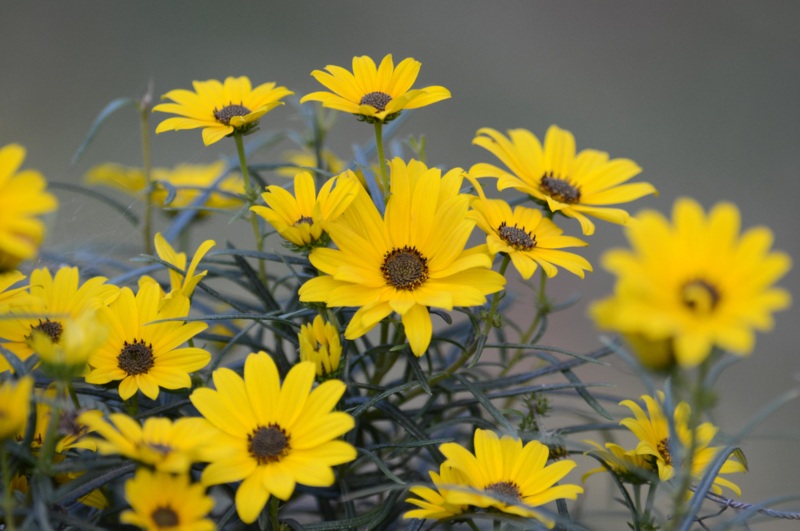
Swamp sunflower is a perennial sunflower that produces masses of bright yellow, daisy-like flowers with contrasting centers. Flowers measure 2 to 3 inches in diameter. It reaches heights of 5 to 7 feet with a spread of 4 to 5 feet. It prefers moist well-drained soil, but will tolerate boggy or soggy soil. Grow swamp sunflowers in full sun. They are hardy in USDA plant hardiness zones 5 through 9.
There are many more perennials to choose from for your Delaware flower garden. Visit local nurseries for more options. Remember to always check the plant hardiness zone when choosing perennials.





